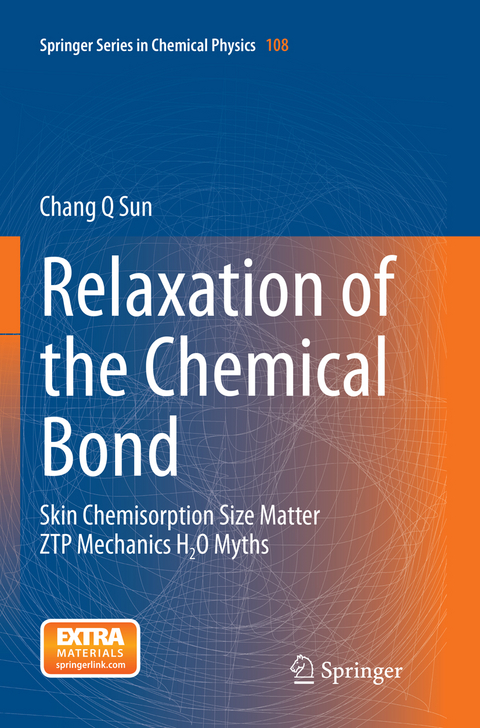
Relaxation of the Chemical Bond
Springer Verlag, Singapore
978-981-10-1224-2 (ISBN)
Dr. Chang Q Sun received a BSc in 1982 from Wuhan University of Science and Technology and an MSc in 1987 from Tianjin University, China. He completed his PhD in 1997 at Murdoch University, Australia and then joined Nanyang Technological University in 1997 as a faculty up to date. His original contributions to the advancement of coordination bond and electronic engineering with multiple breakthroughs include: 1) bond-band-barrier (3B) correlation for C, N, O chemisorption 3B dynamics; 2) hydrogen-bond asymmetric relaxation & H2O anomalies; 3) bond-order-length-strength (BOLS) correlation for the physical chemistry of defect, surface and nanosolid; 4) nonbonding electron polarization (NEP) at undercoordinated sites; 5) local-bond-average approach for solid meso-mechano-thermo dynamics; 6) BOLS-TB algorithm for edge states discrimination; 7) zone-selective photoelectron spectroscopic (ZPS) purification of bonds & electrons associated with undercoordinated defect and surface atoms and hetero-coordinated interfaces; 8) Raman quantification of the length, energy, compressibility, Debye temperature, force constant & relaxation dynamics of bonds; 9) STM/S/VLEED quantification of 4-stage Cu3O2 bonding kinetics; & 10) functional materials devise, etc. Dr. Sun has published over 250 principally-authored journal articles, 4 book chapters, 4 patents and 10 themed reports in Surface Science Reports, Chemical Reviews, Progress in Materials Science and Progress in Solid State Chemistry. etc. His BOLS theory has been adopted as teaching materials by institutes in multiple nations. He was conferred the First Laureate of the 25th Khwarizmi International Science Award in 2012 and the Inaugural Nanyang Award of Research in 2005. He was elected as Fellow of the Royal Society of Chemistry (FRSC, 2006) and the Institute of Physics (FInstP, 2007). He is currently on the Editorial Advisory Board for 8 journals and holding honorary appointments at multiple institutions.
From the Contents: Part I Molecular Chemisorption.- Introduction.- Foundations.- STM and LEED: Atomic Valences and Bond Geometry.- Part II Atomic Undercoordination.- Introduction.- Principles: BOLS and NEP.- Surface Relaxation and Nanosolid Densification.- Part III Mechano and Thermo Activation.- Introduction.- Principles.- Liquid and Solid Surfaces.- Part IV Water and Ice.- Introduction.- Principles: Hypotheses and Expectations.
| Erscheinungsdatum | 23.03.2017 |
|---|---|
| Reihe/Serie | Springer Series in Chemical Physics ; 108 |
| Zusatzinfo | 182 Illustrations, color; 76 Illustrations, black and white; XXXII, 807 p. 258 illus., 182 illus. in color. |
| Verlagsort | Singapore |
| Sprache | englisch |
| Maße | 155 x 235 mm |
| Themenwelt | Naturwissenschaften ► Chemie ► Physikalische Chemie |
| Naturwissenschaften ► Physik / Astronomie ► Atom- / Kern- / Molekularphysik | |
| Naturwissenschaften ► Physik / Astronomie ► Festkörperphysik | |
| Naturwissenschaften ► Physik / Astronomie ► Theoretische Physik | |
| Technik ► Maschinenbau | |
| Schlagworte | Atomic Undercoordination • Atomistic Thermodynamics • Chemical Bond Relaxation • Chemical Bond Theory • Mechano Activation • Molecular Chemisorption • Nanostructures Solid Mechanics • Thermo Activation • Water Ice Chemistry |
| ISBN-10 | 981-10-1224-5 / 9811012245 |
| ISBN-13 | 978-981-10-1224-2 / 9789811012242 |
| Zustand | Neuware |
| Haben Sie eine Frage zum Produkt? |
aus dem Bereich


